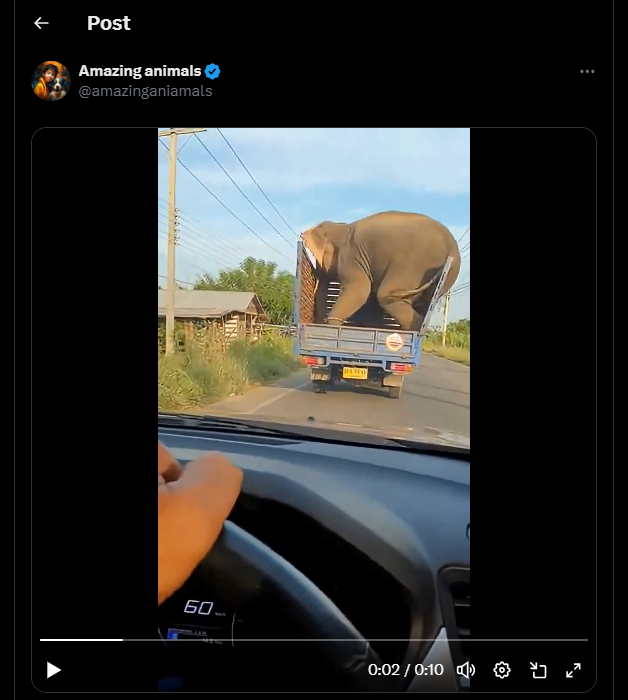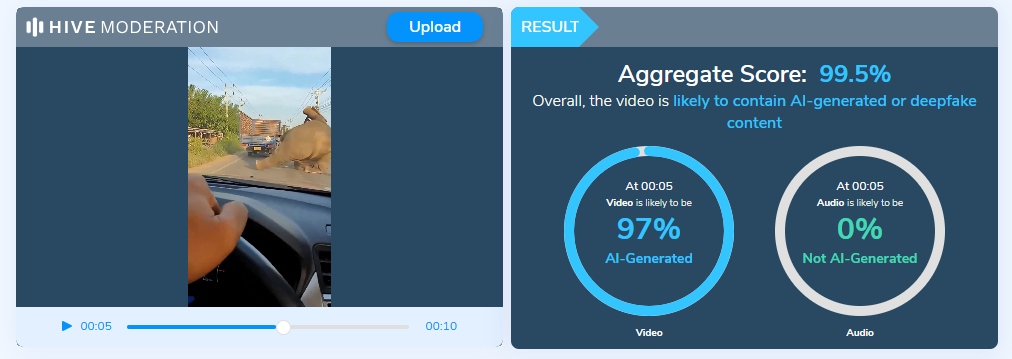DeepFake: A Growing Problem
What are Deepfakes?
A deepfake is essentially a video of a person in which their face or body has been digitally altered so that they appear to be someone else, typically used maliciously or to spread false information. Deepfake technology is a method for manipulating videos, images, and audio utilising powerful computers and deep learning. It is used to generate fake news and commit financial fraud, among other wrongdoings. It overlays a digital composite over an already-existing video, picture, or audio; cybercriminals use Artificial Intelligence technology. The term deepfake was coined first time in 2017 by an anonymous Reddit user, who called himself deepfake.
Deepfakes works on a combination of AI and ML, which makes the technology hard to detect by Web 2.0 applications, and it is almost impossible for a layman to see if an image or video is fake or has been created using deepfakes. In recent times, we have seen a wave of AI-driven tools which have impacted all industries and professions across the globe. Deepfakes are often created to spread misinformation. There lies a key difference between image morphing and deepfakes. Image morphing is primarily used for evading facial recognition, but deepfakes are created to spread misinformation and propaganda.
Issues Pertaining to Deepfakes in India
Deepfakes are a threat to any nation as the impact can be divesting in terms of monetary losses, social and cultural unrest, and actions against the sovereignty of India by anti-national elements. Deepfake detection is difficult but not impossible. The following threats/issues are seen to be originating out of deep fakes:
- Misinformation: One of the biggest issues of Deepfake is misinformation, the same was seen during the Russia-Ukraine conflict, where in a deepfake of Ukraine’s president, Mr Zelensky, surfaced on the internet and caused mass confusion and propaganda-based misappropriation among the Ukrainians.
- Instigation against the Union of India: Deepfake poses a massive threat to the integrity of the Union of India, as this is one of the easiest ways for anti-national elements to propagate violence or instigate people against the nation and its interests. As India grows, so do the possibilities of anti-national attacks against the nation.
- Cyberbullying/ Harassment: Deepfakes can be used by bad actors to harass and bully people online in order to extort money from them.
- Exposure to Illicit Content: Deepfakes can be easily used to create illicit content, and oftentimes, it is seen that it is being circulated on online gaming platforms where children engage the most.
- Threat to Digital Privacy: Deepfakes are created by using existing videos. Hence, bad actors often use photos and videos from Social media accounts to create deepfakes, this directly poses a threat to the digital privacy of a netizen.
- Lack of Grievance Redressal Mechanism: In the contemporary world, the majority of nations lack a concrete policy to address the aspects of deepfake. Hence, it is of paramount importance to establish legal and industry-based grievance redressal mechanisms for the victims.
- Lack of Digital Literacy: Despite of high internet and technology penetration rates in India, digital literacy lags behind, this is a massive concern for the Indian netizens as it takes them far from understanding the tech, which results in the under-reporting of crimes. Large-scale awareness and sensitisation campaigns need to be undertaken in India to address misinformation and the influence of deepfakes.
How to spot deepfakes?
Deepfakes look like the original video at first look, but as we progress into the digital world, it is pertinent to establish identifying deepfakes in our digital routine and netiquettes in order to stay protected in the future and to address this issue before it is too late. The following aspects can be kept in mind while differentiating between a real video and a deepfake
- Look for facial expressions and irregularities: Whenever differentiating between an original video and deepfake, always look for changes in facial expressions and irregularities, it can be seen that the facial expressions, such as eye movement and a temporary twitch on the face, are all signs of a video being a deepfake.
- Listen to the audio: The audio in deepfake also has variations as it is imposed on an existing video, so keep a check on the sound effects coming from a video in congruence with the actions or gestures in the video.
- Pay attention to the background: The most easiest way to spot a deepfake is to pay attention to the background, in all deepfakes, you can spot irregularities in the background as, in most cases, its created using virtual effects so that all deepfakes will have an element of artificialness in the background.
- Context and Content: Most of the instances of deepfake have been focused towards creating or spreading misinformation hence, the context and content of any video is an integral part of differentiating between an original video and deepfake.
- Fact-Checking: As a basic cyber safety and digital hygiene protocol, one should always make sure to fact-check each and every piece of information they come across on social media. As a preventive measure, always make sure to fact-check any information or post sharing it with your known ones.
- AI Tools: When in doubt, check it out, and never refrain from using Deepfake detection tools like- Sentinel, Intel’s real-time deepfake detector - Fake catcher, We Verify, and Microsoft’s Video Authenticator tool to analyze the videos and combating technology with technology.
Recent Instance
A deepfake video of actress Rashmika Mandanna recently went viral on social media, creating quite a stir. The video showed a woman entering an elevator who looked remarkably like Mandanna. However, it was later revealed that the woman in the video was not Mandanna, but rather, her face was superimposed using AI tools. Some social media users were deceived into believing that the woman was indeed Mandanna, while others identified it as an AI-generated deepfake. The original video was actually of a British-Indian girl named Zara Patel, who has a substantial following on Instagram. This incident sparked criticism from social media users towards those who created and shared the video merely for views, and there were calls for strict action against the uploaders. The rapid changes in the digital world pose a threat to personal privacy; hence, caution is advised when sharing personal items on social media.
Legal Remedies
Although Deepfake is not recognised by law in India, it is indirectly addressed by Sec. 66 E of the IT Act, which makes it illegal to capture, publish, or transmit someone's image in the media without that person's consent, thus violating their privacy. The maximum penalty for this violation is ₹2 lakh in fines or three years in prison. The DPDP Act's applicability in 2023 means that the creation of deepfakes will directly affect an individual's right to digital privacy and will also violate the IT guidelines under the Intermediary Guidelines, as platforms will be required to exercise caution while disseminating and publishing misinformation through deepfakes. The indirect provisions of the Indian Penal Code, which cover the sale and dissemination of derogatory publications, songs and actions, deception in the delivery of property, cheating and dishonestly influencing the delivery of property, and forgery with the intent to defame, are the only legal remedies available for deepfakes. Deep fakes must be recognized legally due to the growing power of misinformation. The Data Protection Board and the soon-to-be-established fact-checking body must recognize crimes related to deepfakes and provide an efficient system for filing complaints.
Conclusion
Deepfake is an aftermath of the advancements of Web 3.0 and, hence is just the tip of the iceberg in terms of the issues/threats from emerging technologies. It is pertinent to upskill and educate the netizens about the keen aspects of deepfakes to stay safe in the future. At the same time, developing and developed nations need to create policies and laws to efficiently regulate deepfake and to set up redressal mechanisms for victims and industry. As we move ahead, it is pertinent to address the threats originating out of the emerging techs and, at the same time, create a robust resilience for the same.







